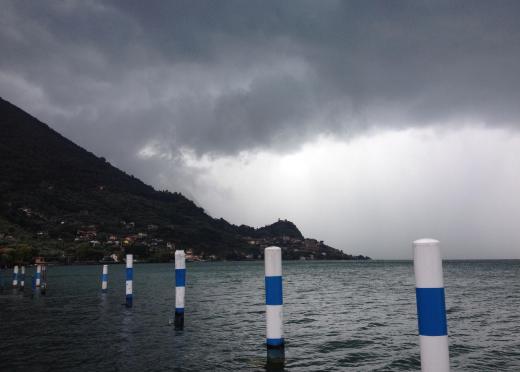What Is the Lapse Rate?
Most people know weather balloons are taking measurements of some sort. In those little boxes suspended from balloons, one of the measurements taken is the atmospheric lapse rate: the rate of decrease in temperature with ascending heights. These little monitoring stations, each smaller than a shoebox, take temperature readings twice a day for two types of rates: the environmental and adiabatic the lapse rates. These rates are important in meteorology, which is the atmospheric science responsible for forecasting weather changes, studying vertical stabilities, and the monitoring of cloud formation and behavior.
Environmental lapse rate is never fixed but varies from time to time and place to place. When measurements are taken in a given place and time, the International Civil Aviation Organization (ICAO) can define an international standard lapse rate, providing readings that vary with identical heights, as inversion layers can cause a reverse temperature increase with ascending heights. These environmental readings compared with either dry or moist adiabatic rates can signal stabilities or instabilities important to know, as dry air packets do not have the lift of moist air packets.

A dry adiabatic lapse rate (DAR) is found in an air packet that is sealed off and has a fixed mass. Insulated from its surrounding environment, a dry adiabatic air packet’s pressures, both inside and outside, are usually matched and the only way to change the temperature of the packet is to cause changes in these pressures. As an air packet rises, it will encounter less outside pressure from the altitude increase and its temperature will cool. The rate of cooling expansion of an air packet is known as the DAR. Increasing cooling eventually arrives at dew point, when condensation can start to form clouds. When a parcel of air descends, the pressures increase and heat causes internal energies that form high winds such as the dry Santa Ana winds that occasionally descend to scorch Los Angeles, California, for days at a time.
The saturated adiabatic lapse rate (SAR) varies with the amount of moisture in the air. Increases in altitude cool and expand air packets slower in moist air pockets as the condensation within them warms them internally. The heat release when forming condensation is a factor in thunderstorm development. Air is stable when the environmental lapse rate is less than the SAR.
Atmosphere thermodynamics is expressed in dry and moist adiabatic forces within air parcels and form the basis for weather predictions. Stable atmospherics take place when the environmental lapse rate is greater than the dry adiabatic rate. During times of intense solar heating of the surface of the earth, a super-adiabatic lapse rate can occur in the southwestern United States in a thin layer across the surface and are an unstable condition. Similarly, lake-effect snow winds moving over a lake surface create super-adiabatic shallow layers that bring about storms, when there is enough moisture in the air.
AS FEATURED ON:
AS FEATURED ON:











Discussion Comments
Thanks for this amazing article. You helped one more geek in this world.
Post your comments